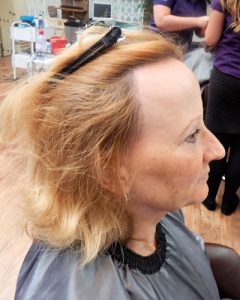Approximately 6.7 million people suffer from Alopecia Areata in the United States, and up till now there has been little in the way of treatment and no sign at all of a cure. That has improved slightly with the news of the approval of a new drug by the Food and Drug Administration.
Litfulo from Pfizer was approved for use in the US in June 2023, and has since been approved in the UK in November and in Canada in December, as being suitable for use in patients age 12 and over with severe symptoms.
The pharmaceutical name, if you can get your tongue around it, is ritlecitinib, and its an enzyme inhibitor which targets what is known as the JAK pathway – which is the part of the immune system which causes the hair follicles to stop growing.
Litfulo may not work for everyone, although it has shown considerable promise in clinical studies so far – in Pfizer’s study of 718 people, 31% of those who had at least 50% hair loss improved to only 20% hair loss after taking the drug for five and a half months. However it will only be after more people have taken the drug and the data from that is assessed, that its true potential will become clear.
Expensive, and there are side-effects
The bad news is that the drug is expected to cost around $49,000 for a years supply. What that will translate to will depend on your health insurance and whether it is covered by it. There are also some side-effects to be aware of: increased risk of contracting infections, including upper respiratory infections and tuberculosis, and the possibility of headaches, dizziness, diarrhoea, and folliculitis.
It should also be noted that the alopecia is likely to return if you stop taking the drug. So it isn’t a cure and whatever the cost turns out to be it may need to be an on-going one for as long as your immune system remains in overdrive.
It is however a promising step towards a time when further research and development may give us a better way of controlling this distressing condition.
Until then our techniques for disguising Alopecia remain one of the few methods of helping women who suffer from it. If you’d like to read more about those techniques then please visit our Alopecia Areata page.


